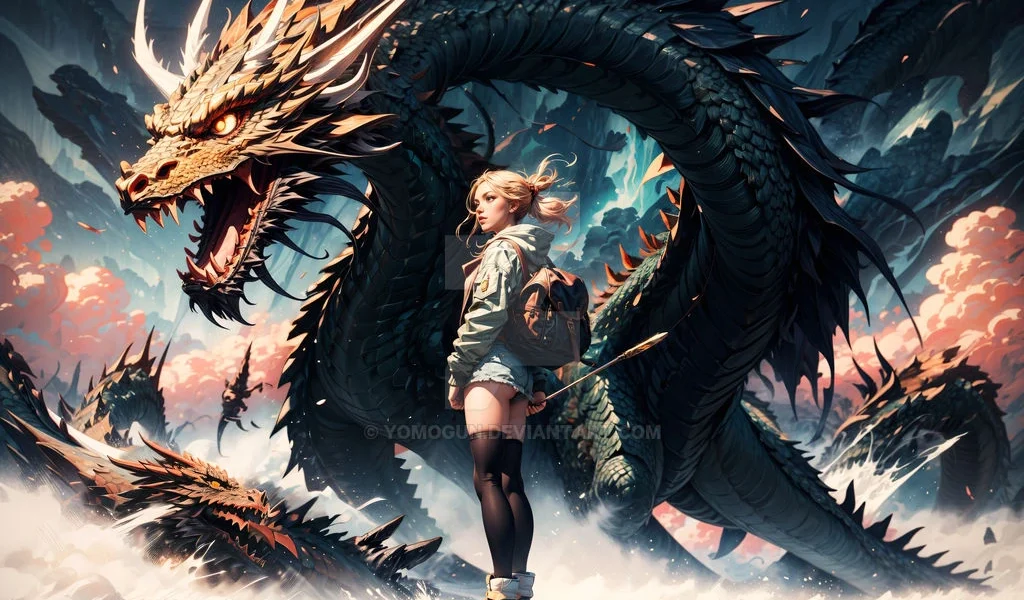Introduction
The art industry is one of the many industries that artificial intelligence, or AI, has transformed. NAFW AI art allows artists new tools to convey their message and automate processes; it can also venture into the uncharted and unknown. With the emergence of NAFW, or Not Appropriate For Work, AI art has brought in a very fiery debate. Since such content usually is explicit and provocative, issues arise concerning ethics, misuse, and legalities.
A 2022 University of Edinburgh study concluded that more than 25% of AI art platforms were utilized to create NAFW AI art. This figure underlines the issue’s widespread occurrence. While some argue that this is an aspect of artistic freedom and creativity, others see potential exploitation, harm, and even violation of societal norms.
Why is NAFW AI Art a Problem?
Ethical Challenges: Art vs Exploitation
- Legal Risks: Many jurisdictions are unclear in terms of their explicit laws surrounding AI-generated content.
- Platform Vulnerability: The platforms hosting AI art risk reputational damage and regulatory attention.
Ignoring these risks is not a viable option for businesses and individuals participating in AI art. So, the question is: how can we responsibly navigate the emergence of NAFW AI art content?
Agitation: The Central Concerns of NAFW AI Art
The best way to begin resolving the problem is to comprehend what’s causing all the agitation regarding NAFW AI art.
1. Ease of Accessibility and Production
Tools that make AI art are generally available and thus allow minimal-skill users to easily produce NAFW AI art content. Applications such as DALL-E 2 and Stable Diffusion allow the user to create highly styled or lifelike images in a matter of seconds.
As an example: TechCrunch reported in 2023 that keyword manipulation on a few AI art platforms was found to get over content controls and generate sexual content.
2. Lax Content Moderation
There are several safeguards on most AI platforms to ensure that the generated content is not misused, but the mechanisms are not fail-proof. Filters are consistently discovered to be overcome by users who find loopholes to generate NAFW art content.
For example: In one of the most publicized cases, an AI platform for producing child-safe educational content was used to generate NAFW images. This created a scandal and resulted in increased oversight.
3. Moral Gray Areas
There is often a thin line between artistic freedom and objectionable material. Different cultures and communities define NAFW content differently, which makes it hard to have global standards.
4. Economic Factors
The demand for explicit content has always been high, and AI tools offer a lucrative avenue for creators and businesses to cater to this market. According to Statista, a 2021 market analysis estimated that NAFW digital art generated over $800 million in revenue globally.
5. Potential for Exploitation
People are harmed, and confidence in AI technologies is damaged by the possibility that AI-generated NAFW art will be utilized maliciously for deepfake pornography, non-consensual imagery, and other exploitative behaviors.
Solution: Tackling the Problem of NAFW AI Art
Tackling this issue is multifaceted, including both technological and regulatory aspects as well as raising public awareness. Here are the steps in action:
1. Better Content Moderation and Filters
The AI platforms have to be prioritized on their robust moderation system for detecting inappropriate content and its blocking. For that purpose:
- Advanced AI algorithms: Such as models trained on identifying explicit patterns and intent behind user prompts;
- Community reporting: Allowing users to flag inappropriate content for review.
- Example: DALL-E 2 by OpenAI has implemented filtering mechanisms that screen for adult content and thus minimize NAFW output.
2. NAFW AI Art Clear Policies and Rules
Clear AI art sites must have defined acceptable use policies that include:
- Content types accepted and rejected.
- Punishments in case of non-compliance.
- Measures to ensure safe AI usage.
Case Study: An AI art firm in 2023 established strict rules and reduced flagged content by 30% within six months.
3. Compliance with Regulation
Governments and regulatory commissions need to formulate standards for the AI-generated arts, more in the case of NAFW. Developers have to do this:
- Follow regional and global developments.
- Ensure products comply with existing legislation.
- International Action: A proposed AI Act within the European Union aims at regulations of applications deemed to involve high risk for AI; here, content-creating tools will feature.
4. User Awareness
User awareness with respect to NAFW AI arts may well keep misuse to a minimum. That implies:
- Highlighting the dangers of making or distributing explicit AI content.
- Promoting the responsible use of AI art platforms.
5. Collaboration Between Stakeholders
Solving the NAFW AI art issue involves collaboration among:
- Developers: To develop safer systems.
- Policymakers: To enforce rules.
- Users: To responsibly use platforms.
- Example: In 2022, an AI coalition by major tech companies focuses on developing industry-wide standards for content moderation.
6. Using AI for Ethical Purposes
AI can really go a long way in serving as a means for positive social impacts. Fostering ethical use cases of AI art will allow this field to avoid NAFWs and find application in educational endeavors, green environmental issues, or cross-cultural education.
Conclusion: The Future of NAFW AI Art
There are benefits and challenges associated with the rise of NAFW AI art content. It emphasizes the critical necessity for safe use while also highlighting the revolutionary potential of AI in the creative industry. Stakeholder cooperation, open policies, and sophisticated moderation can all help reduce the risks connected to NAFW AI art.
Further, the policies and campaigns regarding awareness among people can foster a balanced environment in which AI-generative art flourishes without crossing any lines of ethics. The debates regarding NAFW AI-created content are indeed going to continue, but ensuring proactive steps ahead to create a culture where AI creativity is nurtured responsibly.
The question is no longer if NAFW AI art will exist but how we can manage it so that it does not go against societal values and ethical considerations. The time to act is now.
Read Also: NSFW AI Girlfriend: Technology, Intimacy & Ethical Challenges
FAQ: NAFW AI Art
NAFW AI art is explicit or provocative art that has been created using artificial intelligence tools. Such content often contains things that would be considered inappropriate for workplaces or public spaces.
The controversy is because of ethical issues, the possibility of misuse, such as non-consensual images, and a lack of clear legal frameworks regarding such content.
Many platforms use content filters, advanced algorithms, and user reporting systems to identify and block inappropriate material. However, these safeguards are not foolproof.
Yes, legal risks include violating intellectual property laws, producing non-consensual imagery, and contravening local regulations regarding explicit content.
The key steps are robust content moderation, transparent policies, regulation, and educating the users on the ethical use of AI.





